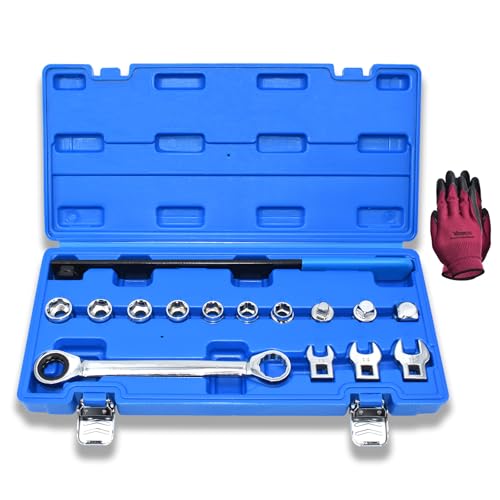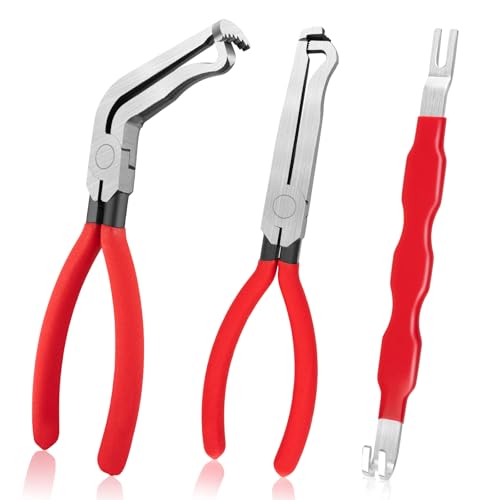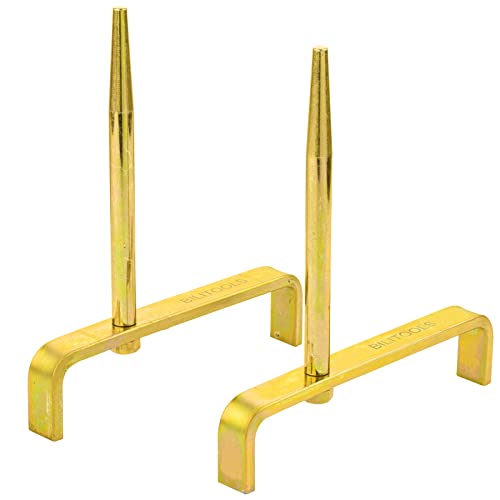Electric pumps are key in today’s world. They are used in many areas, from homes to big industrial sites. These pumps are known for being efficient and reliable, which is why they’re so important.
In this article, we’ll look at different types of electric pumps. We’ll see what makes them special and how to keep them working well. We’ll also talk about the newest tech in electric pumps. Our goal is to help you understand how to choose and use electric pumps effectively.
Understanding Electric Pumps
Electric pumps are key devices that move fluids by turning electrical energy into mechanical energy. They have three main parts: the motor, the casing, and the impeller. Each part is crucial for moving fluids efficiently.
These pumps are used in homes, farms, and industries to manage water better. Submersible pumps are the most common in homes. They work well underwater, perfect for wells and drainage.
Centrifugal pumps are used in industries where space is limited. They can handle big volumes of water. Positive displacement pumps, on the other hand, deliver a fixed amount of water with each cycle, ensuring a steady flow.
Electric water pumps work at pressures between 30 and 40 psi. This makes them good for many uses, from home water transfer to industrial needs. Knowing how electric pumps work and their types helps choose the right one for any task.
Types of Electric Pumps
It’s important to know the different types of electric pumps to choose the right one. The types of electric pumps include centrifugal pumps, which are used to move liquids. They work by using a rotating impeller to create flow.
Submersible pumps are also popular. They work well when they’re underwater. They’re great for managing well water and sewage systems. There are two main types: utility pumps and trash pumps. Each is made for different fluids and debris levels.
Positive displacement pumps are another key type. They trap a fixed amount of fluid and push it into the discharge pipe. This is good for liquids that are thick, as it ensures the right amount is moved, no matter the pressure.
- Centrifugal Pumps: Used for moving liquids with a rotating impeller.
- Submersible Pumps: Made for underwater use, perfect for wells and sewage systems.
- Positive Displacement Pumps: This type moves fluid by trapping a certain amount and discharging it, suitable for higher viscosity applications.
Understanding the differences between these types of electric pumps helps make better choices. Whether you need the speed of a centrifugal pump, the underwater use of a submersible pump, or the dependability of a positive displacement pump, each has its own role in handling fluids.
Benefits of Centrifugal Pumps
Centrifugal pumps are a top pick in many industries. They are energy efficient and cost-effective, saving a lot on operational costs. Their simple design makes them easy to install and operate. They provide consistent flow rates, crucial for tasks like water supply and irrigation.
These pumps can handle many types of liquids, like water, solvents, and acids. This wide range of use highlights their centrifugal pump benefits. They also need less maintenance, ensuring they work well over time.
- High energy efficiency cuts down on operational costs.
- Easy maintenance means less upkeep compared to others.
- They work well in many applications, thanks to stable operation.
- They can handle a variety of liquid viscosities, making them versatile.
Yet, centrifugal pumps have some downsides. They can be affected by air and vapors. They also struggle with very thick liquids. Still, their good performance and cost-effective nature make them a solid choice for both big and small tasks.
Exploring Submersible Pumps
Submersible pumps are made for underwater use. They are key in many fields like mining, agriculture, and oil and gas. They can handle tough liquids and materials, making them perfect for hard environments.
These pumps are great at removing water. They help clear out construction sites, flooded areas, and basements. This is crucial for keeping the environment safe.
In farming, submersible pumps move water from wells and rivers to fields. This helps crops grow well. They also keep fish and shrimp farms healthy by moving water and air.
At home and in cities, they draw water from deep underground. This ensures a steady water supply. They are small and quiet, fitting well in tight spaces without making too much noise.
Their sealed motor makes them reliable and long-lasting. They use less energy, saving money over time. Submersible pumps work well in many areas, including geothermal and oil and gas.
While they cost more upfront, their long-term savings and efficiency make them worth it. They balance budget and performance well.
Positive Displacement Pumps Explained
Positive displacement pumps are key in fluid handling systems. They work by taking a fixed amount of fluid and pushing it through a system. This ensures a steady flow, no matter the pressure changes. They’re great for handling thick fluids like oils and paints, making them useful in many industrial processes.
These pumps fall into two main groups: rotary and reciprocating. Each group has many types, over ten in total. This variety lets them handle fluids of different viscosities, even non-Newtonian ones. Their ability to maintain pressure at high levels is a big plus.
Positive displacement pumps run slower than centrifugal pumps. This is good for handling liquids with solids or abrasives. It helps keep the fluid and pump parts in good shape. But, it can cause flow to pulse, so dampeners are often used to smooth it out.
These pumps offer consistent pressure but need more maintenance. They need to be serviced more often because of their tight parts. While they might not be the cheapest option for thin liquids, they’re cost-effective for tough fluids in the long run.
| Type of Positive Displacement Pump | Features | Best Uses |
|---|---|---|
| Diaphragm Pump | Hermetically sealed, suitable for hazardous fluids | Pumping corrosive or volatile liquids |
| Piston Pump | Reciprocating action with check valves | High-pressure applications requiring precision |
| Screw Pump | Rotary mechanism for fluid trapping | Viscous fluid transfer in industrial settings |
| Gear Pump | Two rotating gears for flow generation | Lubrication and fuel transfer |
| Lobe Pump | Two rotating lobes, gentle on fluids | Food processing and biopharmaceutical applications |
Positive displacement pumps are a reliable choice for many industrial needs. They provide consistent flow, even when conditions change. This makes them crucial in today’s diverse industrial world.
Key Factors in Pump Efficiency
The efficiency of electric pumps is key to their performance. Knowing what affects this efficiency helps improve how they work and save money. Things like flow rate, pressure, and design are important to consider when choosing or using a pump.
Understanding Pump Performance Metrics
There are several ways to measure how well a pump works.
- Flow rate: A higher flow rate means a pump is working better and more efficiently.
- Pressure: The balance between pressure and flow rate is crucial for the pump to run well and use less energy.
- Specific speed: This design feature greatly affects how efficient a pump can be. It helps users pick the right pump for their needs.
- Hydraulic losses: Knowing that the whole system’s efficiency might be lower than each part’s helps us understand how pumps perform.
- Pump application: The type of use a pump has is key. Choosing the right pump for the job is essential for the best efficiency.
Keeping pumps well-maintained and checking them often can make them work better. Even small boosts in efficiency can save a lot of money, especially in big systems. Knowing how to read pump performance metrics helps get the best results for industrial use.
Pump Maintenance for Longevity
To make pumps last longer, regular maintenance is key. Following set maintenance steps helps avoid sudden breakdowns. It also makes the equipment work better for longer.
Regular Inspection Protocols
Regular checks are vital for pump upkeep. You should look at:
- Bearings: Check for wear or too much vibration.
- Seals: Look for leaks to stop fluid loss.
- Impellers: Make sure they’re not damaged or clogged.
- Temperature and amperage: Watch these closely to keep pumps running well.
It’s smart to have a pro check your pumps every year. This helps protect them from the environment.
Common Maintenance Practices
Using standard maintenance can really boost pump performance. Here are some important steps:
- Cleaning filters: This removes blockages that slow things down.
- Checking fluid levels: It keeps things running smoothly and prevents dry running.
- Proper alignment: Fixing any misalignment stops early wear and tear.
- Lubrication: Regular lubrication keeps parts moving smoothly.
These steps cut down on downtime and extend pump life. This leads to more reliable performance in many areas.
Applications of Electric Pumps Across Industries
Electric pumps are key in many sectors, fitting the needs of each industry. They are used in agriculture, water management, and more. The car industry shows how electric pumps are versatile, with a market expected to grow to USD 6.69 billion by 2026.
In farming, solar pumps help with irrigation and water supply, boosting productivity. This is especially true in Asia-Pacific, where countries like India and China use a lot of energy. Using solar power in pumps is becoming more common, showing a shift towards being green.
Electric pumps are divided into two main types: dynamic and positive displacement pumps. Dynamic pumps, like centrifugal pumps, are used in water treatment and oil refining. They handle high flow rates well. Positive displacement pumps, on the other hand, are used in food and pharmaceuticals for accurate dosing.
The table below shows different electric pumps and where they’re used:
| Pump Type | Common Applications | Key Features |
|---|---|---|
| Centrifugal Pumps | Water treatment, chemical processing, oil refining | High flow rates, low viscosity compatibility |
| Positive Displacement Pumps | Food, chemical, pharmaceutical industries | Precise flow rates, high-pressure capabilities |
| Gear Pumps | High viscosity fluids | Complex design, high maintenance |
| Peristaltic Pumps | Pharmaceuticals, food production | Reliable, but high maintenance costs |
| Diaphragm Pumps (e.g., Graco QUANTM EODD) | Chemical injection, fluid transfer | Self-priming, low operating costs, energy-efficient |
Electric pumps are versatile and meet the needs of many industries. They help make processes more efficient and sustainable.
Pump Selection: Choosing the Right Pump for Your Needs
Choosing the right electric pump is a detailed task. It’s important to know the type of fluid you’re pumping. Different fluids affect how well a pump works. For example, some pumps handle liquids easily, while others are better for thicker or more aggressive fluids.
The place where you’ll use the pump matters too. In places like aquaculture, you need to think about temperature, how corrosive the water is, and if there’s debris. The right pump can handle these conditions well.
Flow rate and pressure are key when picking a pump. The pump’s performance depends on these factors. Pumps can handle more water as flow rates go up, but they can’t push water too hard.
Cost is also a big factor. You need to think about the upfront cost, ongoing expenses, and how the pump will perform. The type of pump, the size of the pipes, and the water source all play a role.
| Pump Type | Viscosity Handling | Flow Rate | Special Features |
|---|---|---|---|
| Centrifugal Pump | Low Viscosity | High | Not self-priming, handles solids |
| Peristaltic Pump | Clean/Aggressive | Low | Self-priming, prevents contamination |
| Diaphragm Pump | Very Viscous | Varied | Can run dry, self-priming |
| Gear Pump | High Viscosity | Varied | High pressure, no solid particles |
In conclusion, picking the right pump is a detailed process. It requires careful thought about many factors. Making the right choice can save energy, cut costs, and make your system more reliable.
Pump Sizing: Ensuring Optimal Performance
Getting pump sizing right is key to top-notch pump performance. Accurate calculations help the pump work its best. This means less energy use and more reliable systems. Important factors include pipe size, height, friction, and fluid type.
For example, a system with 40 gallons per minute flow and 2-inch pipe has a 2.64 feet friction loss per 100 feet. With 290 feet of pipe, the loss is 7.7 feet. Adding a 10 feet static head, the total head needed is crucial for pump sizing.
The right pump performance depends on understanding pressure differences. Keeping the pump’s inlet and outlet pressures balanced is essential. Also, making sure the pump’s suction head is enough to avoid cavitation is vital. Fluid thickness also affects flow resistance, impacting pump efficiency.
For the best flow, aim for a scouring velocity of 2 feet per second. Ideal is 3 to 5 ft/s. This keeps flow smooth and prevents sediment buildup. Using performance curves from the manufacturer helps find the pump’s most efficient point.
Following these tips, industries like food, dairy, and pharmaceuticals can improve their pumps. This leads to more reliable systems, less maintenance, and better efficiency.
Innovations in Electric Pump Technology
New electric pump technology is making big strides. It’s getting more efficient and better for the environment. Smart pumps now use IoT to let users check how they’re doing in real time. This helps with maintenance and makes things run smoother.
New materials and designs are making electric pumps last longer and work better. Graco’s QUANTM electric pump is a great example. It’s super efficient, unlike old pumps that waste a lot of energy.
Here’s a table showing how heat pumps are growing and helping the environment:
| Metric | Statistic |
|---|---|
| Growth in global heat pump sales (2022) | 11% |
| Growth in Europe heat pump installations (2022) | 40% |
| China’s share of global heat pump installations | Leading contributor, with Asia accounting for over half of new patents since 2010 |
| Potential emissions reduction from heat pumps by 2030 | 500 million tons |
| Required heat pump installations to meet reduction target | 600 million |
| Coverage of building heating needs by installed heat pumps | About 20% |
The QUANTM electric pump is special because it works well at low speeds. This means it lasts longer and needs less maintenance. It’s also reliable because it has only one moving part.
This pump is like air-operated pumps but better. It can work dry and doesn’t need seals. It’s also light and small, perfect for places you need to move it around.
It can run on 12/24VDC or with inverters. This makes it great for places without strong electricity, like those using solar power. It’s also quieter, making work safer for everyone.
Comparative Analysis of Electric Pump Brands
When looking at electric pump brands, it’s key to compare them well. Brands like Franklin Electric, Goodman, and Carrier have many models. This means they can meet different needs.
The Motif Luna series is known for its closed system design. This design helps keep things clean by stopping backflow. On the other hand, the Ameda Mya Joy is very light, weighing only 0.5 lbs. The Spectra S2, however, is much heavier, at about 4.1 lbs.
About 80% of electric pumps use closed systems. This is a big plus for safety and cleanliness. Many pumps also let you pump hands-free, which is great for those who are always on the go.
The Willow Generation 3 and BabyBuddha® kits are good examples. They offer different breast shield sizes for comfort. In fact, 62% of brands do this.
Warranty and customer support are also important. Most brands offer warranties, lasting from 1 to 3 years. This shows how reliable and supported the brands are. Knowing these details helps consumers choose the best electric pump for their needs.



